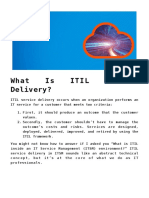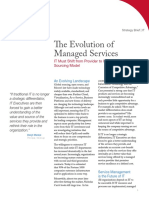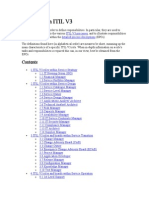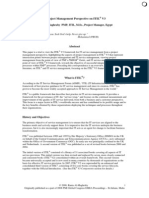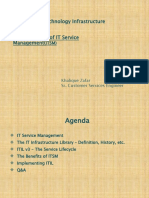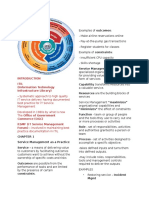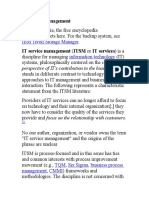0% found this document useful (0 votes)
40 views12 pagesWeek 2 Class Discussion and Revision
IT service delivery is the way a corporation provides users access to IT services like applications and data storage. It involves design, development, deployment, operation and retirement of services. Quality is gauged by metrics in a service-level agreement. An ITSM framework like ITIL dictates processes, people and products involved. The IT service delivery platform includes tools that cover help desk, service catalog, knowledge management and more.
Uploaded by
10654106Copyright
© © All Rights Reserved
We take content rights seriously. If you suspect this is your content, claim it here.
Available Formats
Download as DOCX, PDF, TXT or read online on Scribd
0% found this document useful (0 votes)
40 views12 pagesWeek 2 Class Discussion and Revision
IT service delivery is the way a corporation provides users access to IT services like applications and data storage. It involves design, development, deployment, operation and retirement of services. Quality is gauged by metrics in a service-level agreement. An ITSM framework like ITIL dictates processes, people and products involved. The IT service delivery platform includes tools that cover help desk, service catalog, knowledge management and more.
Uploaded by
10654106Copyright
© © All Rights Reserved
We take content rights seriously. If you suspect this is your content, claim it here.
Available Formats
Download as DOCX, PDF, TXT or read online on Scribd
/ 12

